Airless Painting
At the heart of our shipyard’s commitment to excellence is our airless painting service, a pivotal process that not only enhances the aesthetic appeal of marine vessels but also provides them with robust protection against the relentless challenges posed by the marine environment
Coating for Protection
The marine environment is characterized by its corrosive nature, where salt, moisture, and UV radiation can cause significant damage to a vessel over time. Airless painting creates a protective barrier that shields the ship’s surfaces from these harsh conditions. By applying high-quality coatings with precision and uniformity, we ensure that every inch of the vessel is covered, minimizing the risk of corrosion, rust, and other forms of deterioration. This protective layer is critical not just for maintaining the vessel’s functionality but also for preserving its value over the long term
How We Do It
The sea is an unforgiving force, with saltwater, harsh weather, and constant exposure to the elements gradually wearing down even the most well-built ships. To combat this, our airless painting service is designed to deliver a finish that goes beyond mere appearance—it’s about safeguarding the vessel’s structural integrity and longevity
Here’s a closer look at the application of airless painting in our shipyard and the significant advantages it provides
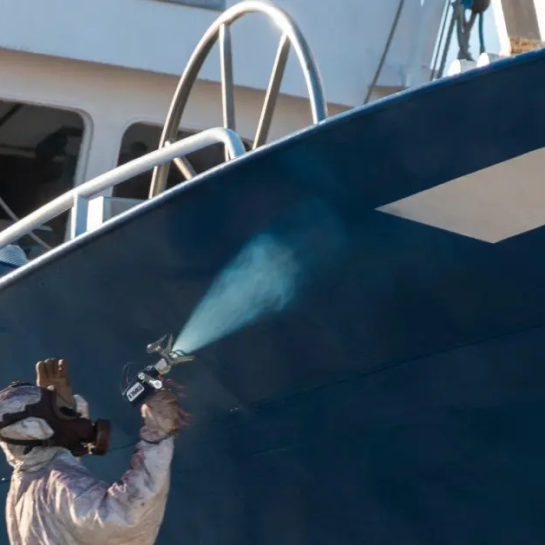
High-Pressure Application
At the heart of airless painting is a powerful pump that generates high pressure, typically ranging from 2000 to 5000 psi. This immense pressure forces the paint through a precision-engineered spray tip, breaking the paint into a fine mist without the need for compressed air. This process creates a dense and consistent spray pattern, ideal for covering expansive surfaces like the hull of a ship. The high-pressure application ensures that even hard-to-reach areas receive an even coat, resulting in a uniform and durable finish

Efficient and Fast
Time is a critical factor in any shipyard operation, and airless painting excels in delivering speed without sacrificing quality. Compared to traditional brush or roller methods, airless painting significantly accelerates the painting process. The high-pressure system allows a large volume of paint to be applied quickly, covering vast areas in a fraction of the time. This efficiency not only reduces the overall time spent on painting but also minimizes downtime for vessels, enabling them to return to service faster
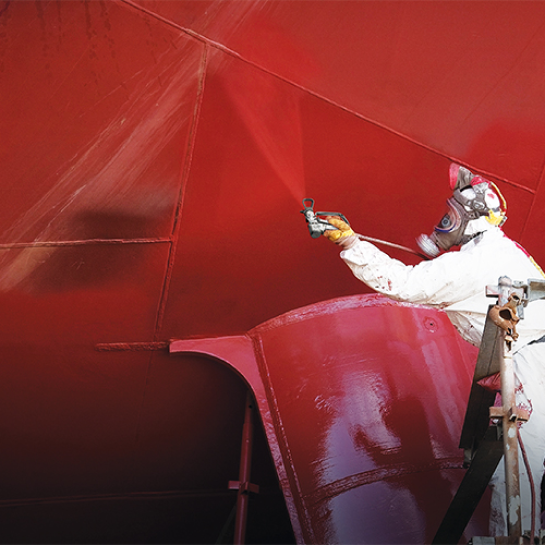
Smooth and Uniform Finish
The precision of airless painting ensures a smooth, even coating across all surfaces, which is essential for both aesthetic and protective purposes. Whether it’s the hull, decks, or superstructure, the fine mist created by airless sprayers produces a seamless finish that enhances the vessel’s appearance and shields it from the harsh marine environment. This method is particularly effective for applying high-build coatings, which are critical for long-lasting protection against corrosion and wear
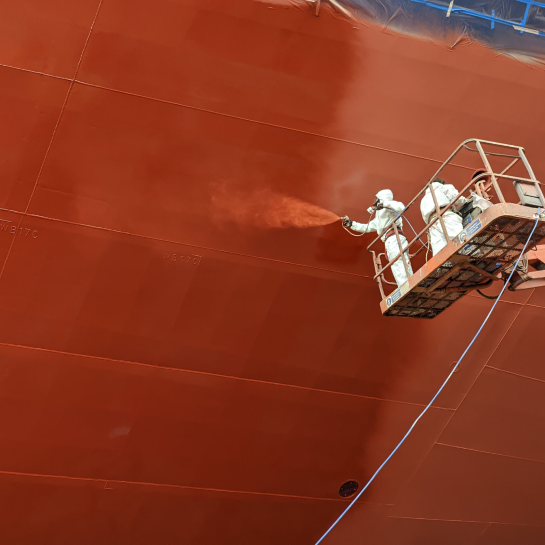
High Transfer Efficiency
One of the standout features of airless painting is its high transfer efficiency. This means that a significant portion of the paint is effectively applied to the surface, minimizing wastage. This efficiency makes the process not only more cost-effective but also environmentally friendly, as less paint is lost to overspray. This is particularly important in shipyards, where large quantities of paint are used, and reducing waste translates to significant savings

Suitable for Various Coatings
Airless painting is incredibly versatile, capable of handling a wide array of coatings, from primers and paints to varnishes and specialized protective coatings. This adaptability makes it the go-to method for applying everything from standard protective layers to high-build coatings that require a thick, even application. The ability to apply these coatings effectively ensures that the vessel is well-protected against the rigors of the sea, extending its service life and reducing maintenance costs
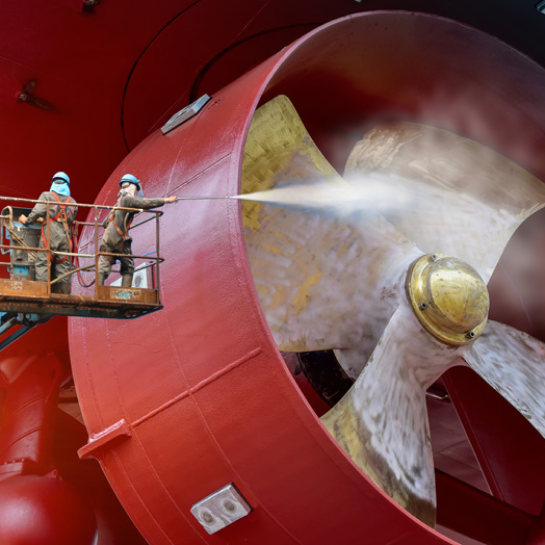
Versatility Across Surfaces
The versatility of airless painting extends to the variety of surfaces and shapes it can cover. Whether it’s flat, curved, or irregular surfaces found on different parts of a ship, such as the hull, decks, superstructure, or tanks, airless painting delivers consistent results. This adaptability is crucial in shipyard environments, where every part of a vessel requires precise and thorough coverage

Reduces Labor Intensity
Airless painting significantly reduces the labor intensity associated with traditional painting methods. By allowing workers to cover large areas quickly and efficiently, it frees up valuable time and resources that can be redirected to other essential tasks within the shipyard. This not only improves overall productivity but also contributes to a safer working environment by reducing the physical strain on workers
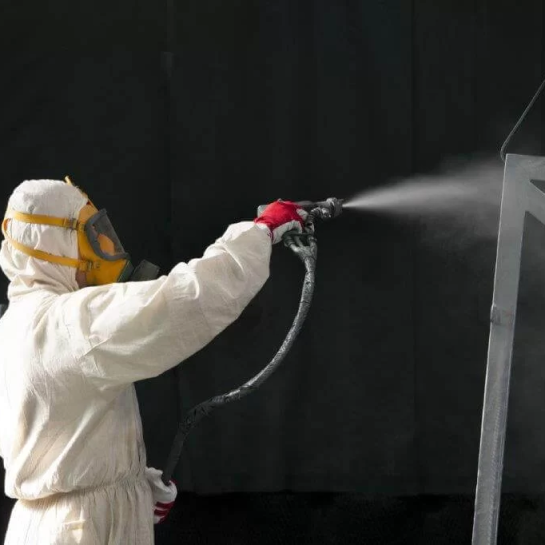
Safety Precautions
While airless painting is highly efficient, it does generate overspray, which can pose safety risks if not properly managed. In our shipyard, we prioritize the safety of our personnel by implementing strict safety protocols. This includes ensuring adequate ventilation in the painting area and providing workers with the necessary personal protective equipment (PPE) to guard against inhalation of paint particles and exposure to overspray

